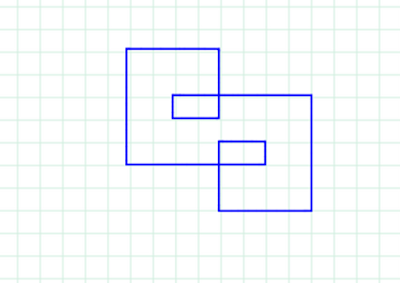We recently had another installment in the series: tough math question that provoked a lot of hand wringing in the UK: crocodile maths. I'm linking to the Aperiodical because (a) those folks are awesome and (b) that's where I first read about the problem. If you want to see the worked solution, that's your destination.
The rest of this post is my comment to the article, making a point that I fear I will reference again and again.
The rest of this post is my comment to the article, making a point that I fear I will reference again and again.
Fake Real World
My issue with this problem is that it tries to embed some math into a “real world” context, but then actual knowledge of that context is in conflict with the math. In this case, there are two conflicts.
First, the crocodile can probably swim faster than it can move on land. They are animals that spend most of their time in the water and are great swimmers. For very short bursts on land, they can also move quickly, but 12m seems too long for one of these short bursts. Also, short land sprints are rare and most footage of crocodiles moving on land shows them going quite slowly. FWIW, there are web references to land speeds of 11kph and swimming speeds of 18 kph or higher (though see below for a caveat on this one).
In any case, given that knowledge, the student’s intuition will be in conflict with the dictated model and should tell them that the crocodile swims the entire distance.
Second, and more importantly, this model is not consistent with the crocodiles’ attack strategy. They don’t make long, wild dashes after prey. Instead, they make use of stealth and patience. The crocodile in this scenario would swim slowly underwater, get as close as possible without detection, and then launch itself out of the water over a short distance. Better yet, the crocodile would already be waiting near the drinking spot, taking advantage of its ability to stay submerged and wait for a very long time.
Because stealth is such a key, it is rare for them to need to swim as fast as possible in the water, hence our lack of clarity about what their maximum swimming speeds are. Contrast with cheetahs, for example, where there is a natural situation in which they need to demonstrate their maximum running speed.
I’ll throw in a third objection: crocodiles and zebra aren’t really part of the “real world” for those sitting the Scottish higher math’s exam. It sits in a strange and uncomfortable third universe that isn’t mathematics and isn’t the actual real world. Perhaps the best name for this odd place is “home of maths word problems.”
Finally, if anyone wants to see a version of the concepts in this problem done well, Dan Meyer’s Taco Cart is the way to go: http://blog.mrmeyer.com/2012/3acts-taco-cart/






